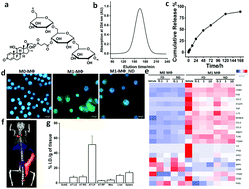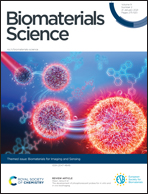Nanocarriers targeting adipose macrophages increase glucocorticoid anti-inflammatory potency to ameliorate metabolic dysfunction†
Abstract
Obesity is associated with systemic inflammation due to macrophage accumulation in adipose tissue (AT). AT macrophages are, therefore, a target for therapeutics to modulate inflammation and prevent comorbidities. Because inflammatory processes have pleiotropic effects throughout the body and are intertwined with metabolic axes, systemic anti-inflammatory therapies are often harmful. We report that targeting AT macrophages using dextran nanocarriers radically alters the pharmacology of anti-inflammatory glucocorticoids, uncoupling the metabolic axis in obese mice. Following a single treatment, expression of inflammatory mediators and markers of inflammatory macrophages decreased with a nearly 20-fold higher potency compared with free drug. As a result, long-term treatment resulted in potent fat mobilization, AT reduction, weight loss, improved glucose tolerance, and altered AT gene expression profiles that led to elevated liver stress. Two weeks after treatment ceased, gene expression of inflammatory mediators in AT remained lower than obese controls, while gene expression related to metabolic function improved. These data demonstrate that nanocarriers show potential for amelioration of obesity-related AT inflammation and metabolic dysfunction, highlighting an important opportunity for nanomedicine to impact chronic metabolic disorders with complex and poorly understood etiology.

- This article is part of the themed collection: Biomaterials for Imaging and Sensing


 Please wait while we load your content...
Please wait while we load your content...